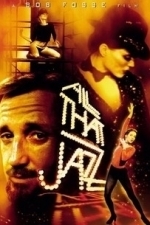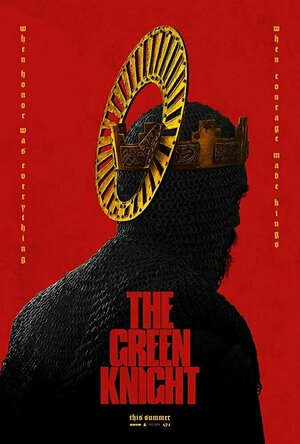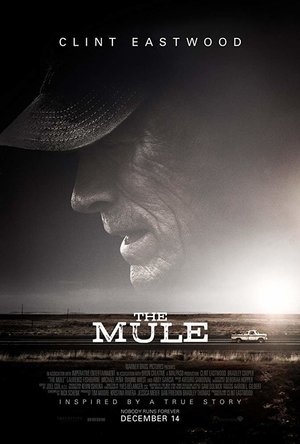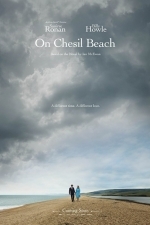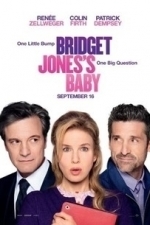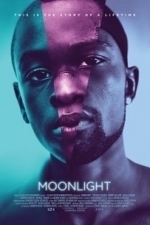Search
Search results
BankofMarquis (1832 KP) rated All That Jazz (1979) in Movies
Oct 1, 2020
Full Blown Fosse (and that's a good thing)
After THE FRENCH CONNECTION, JAWS, MARATHON MAN and SORCERER (and, if I'm honest, JAWS II), my brother and I thought Roy Scheider was just about the toughest son-of-a-gun on the planet, so when he asked if I wanted to check out the latest "Roy Scheider flick", I jumped at the chance.
Little did either of us know that it was the semi-autobiographical Bob Fosse gem ALL THAT JAZZ. Me, being a musical theater kid, was thrilled by this unexpected spectacle while my brother (who would rather sit through C-Span than watch a musical) calls it, to this day, his "favorite" musical (granted, not a long list).
I've rewatched this film various times over the years and still liked it, but I hadn't checked it out for over 20 years at this point, so it was with some trepidation that I popped my DVD in (yes, I own the DVD, not the Blu-Ray) and sat back to see how well it holds up.
And...I shouldn't have worried, for it holds up very, very well. Not only as a film, not only as a musical, not only as a look into the life and times (and style) of Bob Fosse, but also as a looking glass into the late 1970's.
Written and Directed by famed Director/Choreographer Bob Fosse (CABARET, CHICAGO), ALL THAT JAZZ tells the (much more than) semi-autobiographical story of famed Director/Choreographer Joe Gideon (Scheider) who is pushing himself hard to finish a film and mount a Broadway show relying on booze, drugs and philandering.
The performances are strong in this film with a bevy of "Fosse regulars" strutting their stuff. From Leland Palmer (in the obvious Gwen Verdon role) to Ann Reinking (in the Ann Reinking role) to Ben Vereen (as the variety show headliner from hell) they all bring strong Broadway credentials to the screen making the musical numbers a veritable showcase of Fosse movements.
A very young Jessica Lange (in an early role that would showcase her acting chops) is mesmerizing, haunting and very, very watchable as a mysterious women in Joe's life while a very young John Lithgow shows up (and chews the scenery very, very well) as a rival director.
The surprise to me, of course, was the strong performance of Scheider in the lead role. He was Oscar-nominated for his work (deservingly so) and when he finally steps into the big finale musical number, he shows that he can hold his own (surprisingly so). He is PERFECTLY cast as Joe Gideon and he never really approached this strong work again in his career.
But, make no mistake about it, this film showcases Bob Fosse's Directing and Choreography skills - and they are excellent. The style of the film - bouncing from real life to something more ethereal - is strong, and strongly Fosse, giving a clear idea of the life and time in which these events unfold. I stated earlier that this film is a "looking glass" into the late 1970's, and I meant it. It immediately brought me back to those times - both the good and bad of it.
The musical numbers are fascinating to watch with the dancing particularly stunning as the angles and forms that the dancers make with their bodies and arms and legs are a wonder to behold. There has never been anyone like Fosse (before or since) and it is GREAT to watch a showcase of his talents.
This film was nominated for 9 Oscars - winning 4 - but losing Picture, Director (Fosse) and Actor (Scheider) to KRAMER vs. KRAMER (Picture, Director - Robert Benton and Actor - Dustin Hoffman). Now, I haven't seen Kramer vs. Kramer in a long, long time (probably not since I saw it in the theaters in 1979), but I gotta think ALL THAT JAZZ is better in all those categories.
If you haven't seen this in awhile - or if you have NEVER seen it - check out ALL THAT JAZZ, you'll be glad you did.
Letter Grade: A
9 stars (out of 10) and you can take that to the Bank(ofMarquis)
Little did either of us know that it was the semi-autobiographical Bob Fosse gem ALL THAT JAZZ. Me, being a musical theater kid, was thrilled by this unexpected spectacle while my brother (who would rather sit through C-Span than watch a musical) calls it, to this day, his "favorite" musical (granted, not a long list).
I've rewatched this film various times over the years and still liked it, but I hadn't checked it out for over 20 years at this point, so it was with some trepidation that I popped my DVD in (yes, I own the DVD, not the Blu-Ray) and sat back to see how well it holds up.
And...I shouldn't have worried, for it holds up very, very well. Not only as a film, not only as a musical, not only as a look into the life and times (and style) of Bob Fosse, but also as a looking glass into the late 1970's.
Written and Directed by famed Director/Choreographer Bob Fosse (CABARET, CHICAGO), ALL THAT JAZZ tells the (much more than) semi-autobiographical story of famed Director/Choreographer Joe Gideon (Scheider) who is pushing himself hard to finish a film and mount a Broadway show relying on booze, drugs and philandering.
The performances are strong in this film with a bevy of "Fosse regulars" strutting their stuff. From Leland Palmer (in the obvious Gwen Verdon role) to Ann Reinking (in the Ann Reinking role) to Ben Vereen (as the variety show headliner from hell) they all bring strong Broadway credentials to the screen making the musical numbers a veritable showcase of Fosse movements.
A very young Jessica Lange (in an early role that would showcase her acting chops) is mesmerizing, haunting and very, very watchable as a mysterious women in Joe's life while a very young John Lithgow shows up (and chews the scenery very, very well) as a rival director.
The surprise to me, of course, was the strong performance of Scheider in the lead role. He was Oscar-nominated for his work (deservingly so) and when he finally steps into the big finale musical number, he shows that he can hold his own (surprisingly so). He is PERFECTLY cast as Joe Gideon and he never really approached this strong work again in his career.
But, make no mistake about it, this film showcases Bob Fosse's Directing and Choreography skills - and they are excellent. The style of the film - bouncing from real life to something more ethereal - is strong, and strongly Fosse, giving a clear idea of the life and time in which these events unfold. I stated earlier that this film is a "looking glass" into the late 1970's, and I meant it. It immediately brought me back to those times - both the good and bad of it.
The musical numbers are fascinating to watch with the dancing particularly stunning as the angles and forms that the dancers make with their bodies and arms and legs are a wonder to behold. There has never been anyone like Fosse (before or since) and it is GREAT to watch a showcase of his talents.
This film was nominated for 9 Oscars - winning 4 - but losing Picture, Director (Fosse) and Actor (Scheider) to KRAMER vs. KRAMER (Picture, Director - Robert Benton and Actor - Dustin Hoffman). Now, I haven't seen Kramer vs. Kramer in a long, long time (probably not since I saw it in the theaters in 1979), but I gotta think ALL THAT JAZZ is better in all those categories.
If you haven't seen this in awhile - or if you have NEVER seen it - check out ALL THAT JAZZ, you'll be glad you did.
Letter Grade: A
9 stars (out of 10) and you can take that to the Bank(ofMarquis)

Kauai GyPSy Guide Driving Tour
Travel and Navigation
App
GyPSy Guide GPS driving tour of Kauai is an excellent way to enjoy a sightseeing trip to explore the...

i Sail GPS : USA NOAA Marine Chart Plotter
Navigation and Travel
App
Your iPhone or WiFi+Cellular iPad can be a high-performance GPS receiver with USA NOAA Raster...
Erika (17789 KP) rated The Green Knight (2020) in Movies
Aug 2, 2021
Green Knight, based upon the poem, Sir Gawain and the Green Knight, does the poem justice. We join our relatively pure-hearted Sir Gawain (Dev Patel) on Christmas morning, as he wakes up in what appears to be a brothel. He rushes home to his Mother (Sarita Choudhury), to change for the Christmas Day feast with the aged King (Sean Harris). Mother is left behind as Gawain goes to the feast, and conjures the appearance of the Green Knight.
Gawain agrees to the Christmas game proposed by the Green Knight, so he can be knighted himself. The game is the same as the poem, a knight gives a blow to the Green Knight, and a year from that date, the knight will visit the Green Chapel so he can return the favor.
The year passes, and Gawain sets out on his quest. Mother gives him the gift of a green sash, that will protect him as he faces the journey and the Green Knight. He sets off on his trippy journey, encountering a scavenger (Barry Keoghan) along the way and is quickly delayed in his quest and left for dead, losing his green sash. After freeing himself, he sets out on his allegory-filled quest again, encountering St. Winifred (Erin Kellyman), giants, and is led by a fox to a castle near the Green Chapel.
The castle is where the film gets back on track with the poem. The Lord (Joel Egerton) shows kindness and hospitality, while his wife (Alicia Vikander), takes the role as temptress. Alicia Vikander plays both the Lady, and the prostitute that Gawain is in love with back home. It’s understandably confusing for Gawain. The same deal is struck between the Lord and Gawain, while the Lord is away on the hunt, he will give Gawain everything he catches, while Gawain promises to give the Lord anything he receives at the castle. Gawain does not end up keeping the agreement as he’s seduced by the Lady and gets the green sash back. He escapes the castle and goes to the Green Chapel to finish the Christmas game. The end was very interesting, would Gawain choose to be courageous and maintain his honor, accepting death? Or would he be a coward, running away to be knighted, then subsequently become King? The ending was scary good.
My first thought after the film ended was that we finally got a film that did an Arthurian legend justice. I happened to be really into Arthuriana, so this film was such a treat. Though, I am left with some questions. I’m not sure which sister Mother was supposed to be. Was Mother Morgaine or Morgause? I assume it was Morgause, but Mother was a little more witchy, so maybe Morgaine? I also don’t know if in the film, the Green Knight was the Lord. The characters were played by two different actors, but the Lord is definitely supposed to be the Green Knight.
Another thing I did like is that I don’t believe they ever called the King by his name, Arthur. This was a smart move, as the story was centralized on Sir Gawain, and not about Arthur and his Knights of the Round Table.
The one sore thumb for me was Alicia Vikander. Her accent when she was the prostitute, Essel, was horrid. I also think that character wasn’t really needed at all because she was just annoying. The whole brothel situation itself was kind of lame because Gawain was supposed to be pure and innocent. The innocence being lost at the Castle was a major part of the poem.
Dev Patel was excellent as Gawain; I was entranced by him, and he kept my attention the entire film. I know there were grumblings about his casting, but seriously, this is a fantasy story. It also is not impossible for people of a different race to be present all over Europe. There once was this empire called Rome, that encompassed a very large area, and enabled people to travel around and settle in areas.
I had been looking forward to this film since March of 2020, and it completely delivered. I hope we get more films like this, rather than the barrage of big dumb action and comic book films. I can’t wait to go see this film again!
Gawain agrees to the Christmas game proposed by the Green Knight, so he can be knighted himself. The game is the same as the poem, a knight gives a blow to the Green Knight, and a year from that date, the knight will visit the Green Chapel so he can return the favor.
The year passes, and Gawain sets out on his quest. Mother gives him the gift of a green sash, that will protect him as he faces the journey and the Green Knight. He sets off on his trippy journey, encountering a scavenger (Barry Keoghan) along the way and is quickly delayed in his quest and left for dead, losing his green sash. After freeing himself, he sets out on his allegory-filled quest again, encountering St. Winifred (Erin Kellyman), giants, and is led by a fox to a castle near the Green Chapel.
The castle is where the film gets back on track with the poem. The Lord (Joel Egerton) shows kindness and hospitality, while his wife (Alicia Vikander), takes the role as temptress. Alicia Vikander plays both the Lady, and the prostitute that Gawain is in love with back home. It’s understandably confusing for Gawain. The same deal is struck between the Lord and Gawain, while the Lord is away on the hunt, he will give Gawain everything he catches, while Gawain promises to give the Lord anything he receives at the castle. Gawain does not end up keeping the agreement as he’s seduced by the Lady and gets the green sash back. He escapes the castle and goes to the Green Chapel to finish the Christmas game. The end was very interesting, would Gawain choose to be courageous and maintain his honor, accepting death? Or would he be a coward, running away to be knighted, then subsequently become King? The ending was scary good.
My first thought after the film ended was that we finally got a film that did an Arthurian legend justice. I happened to be really into Arthuriana, so this film was such a treat. Though, I am left with some questions. I’m not sure which sister Mother was supposed to be. Was Mother Morgaine or Morgause? I assume it was Morgause, but Mother was a little more witchy, so maybe Morgaine? I also don’t know if in the film, the Green Knight was the Lord. The characters were played by two different actors, but the Lord is definitely supposed to be the Green Knight.
Another thing I did like is that I don’t believe they ever called the King by his name, Arthur. This was a smart move, as the story was centralized on Sir Gawain, and not about Arthur and his Knights of the Round Table.
The one sore thumb for me was Alicia Vikander. Her accent when she was the prostitute, Essel, was horrid. I also think that character wasn’t really needed at all because she was just annoying. The whole brothel situation itself was kind of lame because Gawain was supposed to be pure and innocent. The innocence being lost at the Castle was a major part of the poem.
Dev Patel was excellent as Gawain; I was entranced by him, and he kept my attention the entire film. I know there were grumblings about his casting, but seriously, this is a fantasy story. It also is not impossible for people of a different race to be present all over Europe. There once was this empire called Rome, that encompassed a very large area, and enabled people to travel around and settle in areas.
I had been looking forward to this film since March of 2020, and it completely delivered. I hope we get more films like this, rather than the barrage of big dumb action and comic book films. I can’t wait to go see this film again!
Bob Mann (459 KP) rated The Mule (2018) in Movies
Sep 28, 2021
Eastwood is back, but is he hero or anti-hero?
It’s delightful to see Clint Eastwood back in front of the camera on the big screen. His last starring film was “Trouble with the Curve” in 2012 – a baseball-themed film that I don’t remember coming out in the UK, let alone remember seeing. Before that was 2008’s excellent “Gran Torino”.
Based on a true story.
“The Mule” is based on a true New York Times story about Leo Sharp, a veteren recruited by a cartel to ship drugs from the southern border to Chicago.
Eastwood couldn’t cast Sharp in the movie as himself because he died back in 2016, so had to personally take the role. (This is #satire…. Eastwood’s last film was the terrible “The 15:17 to Paris” where his ‘actors’ were the real-life participants themselves: you won’t find a review on this site as I only review films I’ve managed to sit through…. and with this one I failed!).
The plot.
Eastwood plays Earl Stone, a self-centred horticulturist of award-winning daylily’s (whatever they are) who is estranged from wife Mary (Dianne Wiest) and especially from his daughter Iris (Alison Eastwood, Clint’s own daughter), who now refuses to speak to him. This is because Earl has let his family down at every turn. The only person willing to give him a chance is his grand-daughter Ginny (Taissa Farmiga, younger sister of Vera). With his affairs in financial freefall, a chance meeting at a wedding leads Earl into a money-making driving job for the cartel operated by Laton (Andy Garcia). (Laton doesn’t seem to have a first name….. Fernando perhaps?).
With has beat-up truck and aged manner, he is invisible to the cops and so highly effective in the role. Even when – as the money keeps rolling in – he upgrades his truck to a souped-up monster!
Loose Morals.
It’s difficult to know whether Eastwood is playing a hero or an anti-hero. You feel tense when Earl is at risk of being caught, but then again the law officers would be preventing hundreds of kilos of cocaine from reaching the streets of Chicago and through their actions saving the lives of probably hundreds of people. I felt utterly conflicted: the blood of those people, and the destruction of the families that addiction causes, was on Earl’s hands as much as his employer’s. But you can’t quite equate that to the affable old-man that Eastwood portrays, who uses much of the money for charitable good-works in his community.
Family values.
In parallel with the drug-running main plot is a tale of Earl’s attempted redemption: “family should always come first”. When the two storylines come together around a critical event then it feels like a sufficient trigger for Earl to turn his back on his life of selfishness. This also gives room for some splendid acting scenes between Eastwood and Wiest. It’s also interesting that Earl tries to teach the younger DEA enforcement agent not to follow in the sins of his past. Bradley Cooper, back in pretty-boy mode, plays the agent, but seemed to me to be coasting; to me he wasn’t convincing in the role. Michael Peña is better as his unnamed DEA-buddy.
Final thoughts.
The showing at my cinema was surprisingly well-attended for a Wednesday night, showing that Eastwood is still a star-draw for box-office even in his old age. And it’s the reason to see the film for sure. His gristled driving turn to camera (most fully seen in the trailer rather than the final cut) is extraordinary.
He even manages to turn in an “eyes in rearview-mirror” shot that is surely a tribute to his Dirty Harry days!
If you can park your moral compass for a few hours then its an enjoyable film of drug-running and redemption. I’d like to suggest it also illustrates that crime really doesn’t pay, but from the end titles scene I’m not even sure at that age if that even applies!
Based on a true story.
“The Mule” is based on a true New York Times story about Leo Sharp, a veteren recruited by a cartel to ship drugs from the southern border to Chicago.
Eastwood couldn’t cast Sharp in the movie as himself because he died back in 2016, so had to personally take the role. (This is #satire…. Eastwood’s last film was the terrible “The 15:17 to Paris” where his ‘actors’ were the real-life participants themselves: you won’t find a review on this site as I only review films I’ve managed to sit through…. and with this one I failed!).
The plot.
Eastwood plays Earl Stone, a self-centred horticulturist of award-winning daylily’s (whatever they are) who is estranged from wife Mary (Dianne Wiest) and especially from his daughter Iris (Alison Eastwood, Clint’s own daughter), who now refuses to speak to him. This is because Earl has let his family down at every turn. The only person willing to give him a chance is his grand-daughter Ginny (Taissa Farmiga, younger sister of Vera). With his affairs in financial freefall, a chance meeting at a wedding leads Earl into a money-making driving job for the cartel operated by Laton (Andy Garcia). (Laton doesn’t seem to have a first name….. Fernando perhaps?).
With has beat-up truck and aged manner, he is invisible to the cops and so highly effective in the role. Even when – as the money keeps rolling in – he upgrades his truck to a souped-up monster!
Loose Morals.
It’s difficult to know whether Eastwood is playing a hero or an anti-hero. You feel tense when Earl is at risk of being caught, but then again the law officers would be preventing hundreds of kilos of cocaine from reaching the streets of Chicago and through their actions saving the lives of probably hundreds of people. I felt utterly conflicted: the blood of those people, and the destruction of the families that addiction causes, was on Earl’s hands as much as his employer’s. But you can’t quite equate that to the affable old-man that Eastwood portrays, who uses much of the money for charitable good-works in his community.
Family values.
In parallel with the drug-running main plot is a tale of Earl’s attempted redemption: “family should always come first”. When the two storylines come together around a critical event then it feels like a sufficient trigger for Earl to turn his back on his life of selfishness. This also gives room for some splendid acting scenes between Eastwood and Wiest. It’s also interesting that Earl tries to teach the younger DEA enforcement agent not to follow in the sins of his past. Bradley Cooper, back in pretty-boy mode, plays the agent, but seemed to me to be coasting; to me he wasn’t convincing in the role. Michael Peña is better as his unnamed DEA-buddy.
Final thoughts.
The showing at my cinema was surprisingly well-attended for a Wednesday night, showing that Eastwood is still a star-draw for box-office even in his old age. And it’s the reason to see the film for sure. His gristled driving turn to camera (most fully seen in the trailer rather than the final cut) is extraordinary.
He even manages to turn in an “eyes in rearview-mirror” shot that is surely a tribute to his Dirty Harry days!
If you can park your moral compass for a few hours then its an enjoyable film of drug-running and redemption. I’d like to suggest it also illustrates that crime really doesn’t pay, but from the end titles scene I’m not even sure at that age if that even applies!
Bob Mann (459 KP) rated On Chesil Beach (2018) in Movies
Sep 29, 2021
Flawed but moving tale of a bygone sexual era.
As you might notice from my lack of recent posts, the day job is getting in a way a bit at the moment. But one film I wanted to catch was this adaptation of Ian McEwan’s novel. What’s both an advantage and a disadvantage of catching a film late is that you can’t help avoid absorbing some of the reviews of others: Kevin Maher of the Times gave this a rather sniffy two stars; Amy from “Oh That Film Blog” was much more measured (an excellent review: man, that girl can write!). Last night, I actually ended up enjoying the film much more than I was expecting to.
Set against Dorset’s spectacular shingle bank of Chesil Beach (which is a bitch to walk along!) the story, set primarily in 1962, joins two newly-weds Florence (Saoirse Ronan, “Brooklyn“, “Lady Bird“) and Edward (Billy Howle, “Dunkirk“) about to embark on the sexual adventure of their consummation at a seaside hotel. The timing of the film is critical: 1962 really marked the watershed between the staid conservatism and goody-two-shoes-ness of the 50’s and the sexual liberation of the swinging sixties. Sex before marriage was frowned upon. The problem for Florence and Edward is that sex after marriage is looking pretty unlikely too! For the inexperienced couple have more hang-ups about sex than there are pebbles on the beach.
The lead-up to their union is squirm-inducing to watch: a silent silver-service meal in their room; incompetent fumbling with zippers; shoes that refuse to come off. To prolong the agony for the viewer, we work through flashbacks of their first meeting at Oxford University and their dysfunctional family lives: for Florence a bullying father and mother (Samuel West and Emily Watson) and for Edward a loving but stressed father (TV regular, Adrian Scarborough) due to a mentally impaired mother (Anne-Marie Duff, “Suffragette“, “Before I Go To Sleep“).
As Ian McEwan is known to do (as per the end of “Atonement” for example), there are a couple of clever “Oh My God” twists in the tale: one merely hinted at in flashback; another involving a record-buying child that is also unresolved but begs a massive question.
The first half of the film is undoubtedly better than the last: while the screenplay is going for the “if only” twist of films like “Sliding Doors” and “La La Land“, the film over-stretches with some dodgy make-up where alternative actors would have been a far better choice. The ending still had the power to move me though.
Saoirse Ronan is magnificent: I don’t think I’ve seen the young Irish-American in a film I didn’t enjoy. Here she is back with a McEwan adaptation again and bleeds discomfort with every line of her face. Her desperate longing to talk to someone – such as the kindly probing vicar – is constantly counteracted by her shame and embarassment. Howle also holds his own well (no pun intended) but when up against the acting tour de force of Ronan he is always going to appear in second place.
A brave performance comes from Anne-Marie Duff who shines as the mentally wayward mother. The flashback where we see how she came to be that way is wholly predicatable but still manages to shock. And Duff is part of a strong ensemble cast who all do their bit.
Another star of the show for me is the photography by Sean Bobbitt (“12 Years a Slave“) which portrays the windswept Dorset beach beautifully but manages to get the frame close and claustrophobic when it needs to be. Wide panoramas with characters barely on the left and right of the frame will play havoc with DVD ratios on TV, but work superbly on the big screen.
Directed by stage-director Dominic Cooke, in his movie-directing debut, this is a brave story to try to move from page to screen and while it is not without faults it is a ball-achingly sad tale that moved me. Recommended if you enjoyed the similarly sad tale of “Atonement”.
Set against Dorset’s spectacular shingle bank of Chesil Beach (which is a bitch to walk along!) the story, set primarily in 1962, joins two newly-weds Florence (Saoirse Ronan, “Brooklyn“, “Lady Bird“) and Edward (Billy Howle, “Dunkirk“) about to embark on the sexual adventure of their consummation at a seaside hotel. The timing of the film is critical: 1962 really marked the watershed between the staid conservatism and goody-two-shoes-ness of the 50’s and the sexual liberation of the swinging sixties. Sex before marriage was frowned upon. The problem for Florence and Edward is that sex after marriage is looking pretty unlikely too! For the inexperienced couple have more hang-ups about sex than there are pebbles on the beach.
The lead-up to their union is squirm-inducing to watch: a silent silver-service meal in their room; incompetent fumbling with zippers; shoes that refuse to come off. To prolong the agony for the viewer, we work through flashbacks of their first meeting at Oxford University and their dysfunctional family lives: for Florence a bullying father and mother (Samuel West and Emily Watson) and for Edward a loving but stressed father (TV regular, Adrian Scarborough) due to a mentally impaired mother (Anne-Marie Duff, “Suffragette“, “Before I Go To Sleep“).
As Ian McEwan is known to do (as per the end of “Atonement” for example), there are a couple of clever “Oh My God” twists in the tale: one merely hinted at in flashback; another involving a record-buying child that is also unresolved but begs a massive question.
The first half of the film is undoubtedly better than the last: while the screenplay is going for the “if only” twist of films like “Sliding Doors” and “La La Land“, the film over-stretches with some dodgy make-up where alternative actors would have been a far better choice. The ending still had the power to move me though.
Saoirse Ronan is magnificent: I don’t think I’ve seen the young Irish-American in a film I didn’t enjoy. Here she is back with a McEwan adaptation again and bleeds discomfort with every line of her face. Her desperate longing to talk to someone – such as the kindly probing vicar – is constantly counteracted by her shame and embarassment. Howle also holds his own well (no pun intended) but when up against the acting tour de force of Ronan he is always going to appear in second place.
A brave performance comes from Anne-Marie Duff who shines as the mentally wayward mother. The flashback where we see how she came to be that way is wholly predicatable but still manages to shock. And Duff is part of a strong ensemble cast who all do their bit.
Another star of the show for me is the photography by Sean Bobbitt (“12 Years a Slave“) which portrays the windswept Dorset beach beautifully but manages to get the frame close and claustrophobic when it needs to be. Wide panoramas with characters barely on the left and right of the frame will play havoc with DVD ratios on TV, but work superbly on the big screen.
Directed by stage-director Dominic Cooke, in his movie-directing debut, this is a brave story to try to move from page to screen and while it is not without faults it is a ball-achingly sad tale that moved me. Recommended if you enjoyed the similarly sad tale of “Atonement”.
Bob Mann (459 KP) rated Bridget Jones's Baby (2016) in Movies
Sep 29, 2021
Come the F*** on Bridget… who’s the Daddy?
The world’s favourite lonely-hearts diarist is back. Bridget (Renée Zellweger) once again starts the film ‘all by herself’, haunted by occasional meetings with ex-flame Mark D’Arcy (Colin Firth) – now married to Camilla (Agni Scott) – and facing the natural discomfort of the early funeral of another friend who has died way too young. And at 43, Bridget’s biological clock is also ticking towards parental midnight.
Proving that enormous ditzyness and lack of talent need not be an impediment to a successful career, Bridget is now a top TV floor manager on a cable news station, anchored by friend Miranda (an excellent Sarah Solemani). In an effort to shake Bridget out of her malaise, Miranda takes her to a music festival (featuring some fun cameos!) where she has a one-night-stand with the delectable (speaking at least for all the women in my audience) Jack (Patrick Dempsey). Following another one-night-stand with D’Arcy and finding herself pregnant, a comedy of farce follows with one expectant mother and two prospective fathers competing for Bridget’s affections.
OK. So it’s not bloody Shakespeare. But it is an extremely well-crafted comedy, and as a British rom-com it significantly out-does many of the efforts of the rom-com king – Richard Curtis – in recent years. As a series its just amazing how many of the original cast have been reunited after 2004’s rather lacklustre “Bridget Jones: Edge of Reason”. Particularly effective are Bridget’s parents, played by the delectably Tory Gemma Jones and the ever-perfect Jim Broadbent. And Bridget’s trio of irreverent friends: Shazzer (Sally Phillips), Jude (Shirley Henderson) and Tom (James Callis) are all back. All are either well into parenthood or have impending parenthood, adding to the pressure on Bridget’s aching ovaries.
New to the cast, and brilliant in every scene she’s in, is the ever-radiant Emma Thompson as Bridget’s doctor. Is there any actress in the movies today that can deliver a comic line better-timed than Thompson? I doubt it. Just superb. And Thompson also co-wrote the screenplay, together with Bridget author Helen Fielding and – an unlikely contributor – Ali G collaborator Dan Mazer. All contribute to a sizzling script – not based on Fielding’s poorly received story – that zips along and makes the 123 minute run-time fly by. My one reservation would be – despite the film being set in the current day – lapses into internet memes like Hitler Cats and song crazes that are at least five years out of date. But I forgive that for the Colin Firth ‘Gangnam’ line, for me the funniest in the whole film.
Zellweger looks fantastic, pulling off the 4 year age difference from her character with ease. And isn’t it wonderful to see a middle-aged character as the centre of a rom-com for once? Hollywood would be well to remember that romance is not restricted to the 20-somethings. Certainly the packed cinema – filled with probably 90% (well oiled) women – certainly thought so, in what was a raucous and entertaining showing!
The music is superbly supported by an epic soundtrack of well-chosen tracks from Ellie Goulding, Years and Years, Jess Glynne, Lily Allen (with very funny adult content!) and classic oldies, all wrappered with nice themes by the brilliant and underrated Craig “Love Actually” Armstrong.
Sharon Maguire – the director of the original “Diary” – has delivered here a fun, absorbing and enormously entertaining piece of fluff that deserves to do well. And it has in the UK, making $11M in its opening weekend here and playing to packed showings. However – incomprehensibly – it has bombed in the US with only $8M coming in. Hopefully it might prove a bit of a sleeper hit there: come on America… we go to see all of the rubbish rom-coms you send over here, and this is way better than most of those!
This was a film I was determined to be sniffy about with my rating. But as a) I enjoyed it very much and b) a packed audience of women can’t be wrong…
Proving that enormous ditzyness and lack of talent need not be an impediment to a successful career, Bridget is now a top TV floor manager on a cable news station, anchored by friend Miranda (an excellent Sarah Solemani). In an effort to shake Bridget out of her malaise, Miranda takes her to a music festival (featuring some fun cameos!) where she has a one-night-stand with the delectable (speaking at least for all the women in my audience) Jack (Patrick Dempsey). Following another one-night-stand with D’Arcy and finding herself pregnant, a comedy of farce follows with one expectant mother and two prospective fathers competing for Bridget’s affections.
OK. So it’s not bloody Shakespeare. But it is an extremely well-crafted comedy, and as a British rom-com it significantly out-does many of the efforts of the rom-com king – Richard Curtis – in recent years. As a series its just amazing how many of the original cast have been reunited after 2004’s rather lacklustre “Bridget Jones: Edge of Reason”. Particularly effective are Bridget’s parents, played by the delectably Tory Gemma Jones and the ever-perfect Jim Broadbent. And Bridget’s trio of irreverent friends: Shazzer (Sally Phillips), Jude (Shirley Henderson) and Tom (James Callis) are all back. All are either well into parenthood or have impending parenthood, adding to the pressure on Bridget’s aching ovaries.
New to the cast, and brilliant in every scene she’s in, is the ever-radiant Emma Thompson as Bridget’s doctor. Is there any actress in the movies today that can deliver a comic line better-timed than Thompson? I doubt it. Just superb. And Thompson also co-wrote the screenplay, together with Bridget author Helen Fielding and – an unlikely contributor – Ali G collaborator Dan Mazer. All contribute to a sizzling script – not based on Fielding’s poorly received story – that zips along and makes the 123 minute run-time fly by. My one reservation would be – despite the film being set in the current day – lapses into internet memes like Hitler Cats and song crazes that are at least five years out of date. But I forgive that for the Colin Firth ‘Gangnam’ line, for me the funniest in the whole film.
Zellweger looks fantastic, pulling off the 4 year age difference from her character with ease. And isn’t it wonderful to see a middle-aged character as the centre of a rom-com for once? Hollywood would be well to remember that romance is not restricted to the 20-somethings. Certainly the packed cinema – filled with probably 90% (well oiled) women – certainly thought so, in what was a raucous and entertaining showing!
The music is superbly supported by an epic soundtrack of well-chosen tracks from Ellie Goulding, Years and Years, Jess Glynne, Lily Allen (with very funny adult content!) and classic oldies, all wrappered with nice themes by the brilliant and underrated Craig “Love Actually” Armstrong.
Sharon Maguire – the director of the original “Diary” – has delivered here a fun, absorbing and enormously entertaining piece of fluff that deserves to do well. And it has in the UK, making $11M in its opening weekend here and playing to packed showings. However – incomprehensibly – it has bombed in the US with only $8M coming in. Hopefully it might prove a bit of a sleeper hit there: come on America… we go to see all of the rubbish rom-coms you send over here, and this is way better than most of those!
This was a film I was determined to be sniffy about with my rating. But as a) I enjoyed it very much and b) a packed audience of women can’t be wrong…
Bob Mann (459 KP) rated Jackie (2016) in Movies
Sep 29, 2021
Spoiler! Her husband gets shot.
“Jackie” tells the story of the spiralling grief, loss and anger of Jackie Kennedy driven by the assassination of JFK in Dallas in November 1963. Hopping backwards and forwards in flashback, the film centres on the first interview given by Jackie (Natalie Portman, “Black Swan”) to a ‘Time’ journalist (Billy Crudup, “Watchmen”, “Spotlight”).
Through this interview we flashback to see Jackie as the young First Lady engaged in recording a TV special for a tour of the White House: nervous, unsure of herself and with a ‘baby girl’ voice. This contrasts with her demeanour in the interview which – although subject to emotional outburst and grief – is assured, confident and above all extremely assertive. We live the film through Jackie’s eyes as she experiences the arrival in Dallas, the traumatic events of November 22nd in Dealey Plaza, the return home to Washington and the complicated arrangement of the President’s funeral.
This is an acting tour de force for Natalie Portman, who is astonishingly emotional as the grief-stricken ex-first lady. She nails this role utterly and completely. Having already won the Golden Globe for an actress in a dramatic role, you would be a foolish man to bet against her not taking the Oscar. (I know I said just the other week that I though Emma Stone should get it for “La La Land” – as another Golden Globe winner, for the Comedy/Musical category – and a large part of my heart would still really like to see Stone win it…. But excellent as that performance was, this is a far more challenging role.)
In a key supporting role is Peter Sarsgaard (“The Magnificent Seven”) as Bobby Kennedy (although his lookalike is not one of the best: that accolade I would give to Gaspard Koenig, in an un-speaking role, as the young Ted Kennedy).
Also providing interesting support as Jackie’s priest is John Hurt (“Alien”, “Dr Who”) and, as Jackie’s close friend, the artist Bill Walton, is Richard E Grant (“Withnail and I”, who as he grows older is looking more and more like Geoffrey Rush – I was sure it was him!).
Director Pablo Larraín (whose previous work I am not familiar with) automatically assumes that EVERYONE has the background history to understand the narrative without further explanation: perhaps as this happened 54 years ago, this is a bit of a presumption for younger viewers? Naturally for people of my advanced years, these events are as burned into our collective psyches as the images in the Zapruder film.
While the film focuses predominantly, and brilliantly, on Jackie’s mental state, the film does gently question (via an outburst from Bobby) as to what JFK actually achieved in his all too short presidency – ‘Will he be remembered for resolving the Cuban missile crisis: something he originally created?’ rants Bobby. In reality, JFK is remembered in history for this assassination and the lost potential for what he might have done. I would have liked the script to have delved a little bit further into that collective soul-searching.
This is a very sombre movie in tone, from the bleak opening, with a soundtrack of sonorous strings, to the bleak weather-swept scenes at Arlington cemetery. The cinematography (by Stéphane Fontaine, “Rust and Bone”) cleverly contrasts between the vibrant hues of Jackie’s “Camelot” to the washed-out blueish tones of the post-assassination events. If you don’t feel depressed going into this film, you probably will be coming out! But the journey is a satisfying one nonetheless, and the script by Noah Oppenheim – in a SIGNIFICANT departure from his previous teen-flick screenplays for “Allegiant” and “The Maze Runner” – is both tight and thought-provoking.
Overall, a recommended watch which comes with a prediction: “And the Oscar goes to… Natalie Portman”.
Finally, note that for those of a squeamish disposition, there is a very graphic depiction of the assassination from Jackie’s point-of-view…. but this is not until nearly the end of the film, so you are reasonably safe until then!
Also as a final general whinge, could directors PLEASE place an embargo on the logos of more than two production companies coming up at the start of a film? This has about six of them and is farcical, aping the (very amusing) parody in “Family Guy” (as shown here).
Through this interview we flashback to see Jackie as the young First Lady engaged in recording a TV special for a tour of the White House: nervous, unsure of herself and with a ‘baby girl’ voice. This contrasts with her demeanour in the interview which – although subject to emotional outburst and grief – is assured, confident and above all extremely assertive. We live the film through Jackie’s eyes as she experiences the arrival in Dallas, the traumatic events of November 22nd in Dealey Plaza, the return home to Washington and the complicated arrangement of the President’s funeral.
This is an acting tour de force for Natalie Portman, who is astonishingly emotional as the grief-stricken ex-first lady. She nails this role utterly and completely. Having already won the Golden Globe for an actress in a dramatic role, you would be a foolish man to bet against her not taking the Oscar. (I know I said just the other week that I though Emma Stone should get it for “La La Land” – as another Golden Globe winner, for the Comedy/Musical category – and a large part of my heart would still really like to see Stone win it…. But excellent as that performance was, this is a far more challenging role.)
In a key supporting role is Peter Sarsgaard (“The Magnificent Seven”) as Bobby Kennedy (although his lookalike is not one of the best: that accolade I would give to Gaspard Koenig, in an un-speaking role, as the young Ted Kennedy).
Also providing interesting support as Jackie’s priest is John Hurt (“Alien”, “Dr Who”) and, as Jackie’s close friend, the artist Bill Walton, is Richard E Grant (“Withnail and I”, who as he grows older is looking more and more like Geoffrey Rush – I was sure it was him!).
Director Pablo Larraín (whose previous work I am not familiar with) automatically assumes that EVERYONE has the background history to understand the narrative without further explanation: perhaps as this happened 54 years ago, this is a bit of a presumption for younger viewers? Naturally for people of my advanced years, these events are as burned into our collective psyches as the images in the Zapruder film.
While the film focuses predominantly, and brilliantly, on Jackie’s mental state, the film does gently question (via an outburst from Bobby) as to what JFK actually achieved in his all too short presidency – ‘Will he be remembered for resolving the Cuban missile crisis: something he originally created?’ rants Bobby. In reality, JFK is remembered in history for this assassination and the lost potential for what he might have done. I would have liked the script to have delved a little bit further into that collective soul-searching.
This is a very sombre movie in tone, from the bleak opening, with a soundtrack of sonorous strings, to the bleak weather-swept scenes at Arlington cemetery. The cinematography (by Stéphane Fontaine, “Rust and Bone”) cleverly contrasts between the vibrant hues of Jackie’s “Camelot” to the washed-out blueish tones of the post-assassination events. If you don’t feel depressed going into this film, you probably will be coming out! But the journey is a satisfying one nonetheless, and the script by Noah Oppenheim – in a SIGNIFICANT departure from his previous teen-flick screenplays for “Allegiant” and “The Maze Runner” – is both tight and thought-provoking.
Overall, a recommended watch which comes with a prediction: “And the Oscar goes to… Natalie Portman”.
Finally, note that for those of a squeamish disposition, there is a very graphic depiction of the assassination from Jackie’s point-of-view…. but this is not until nearly the end of the film, so you are reasonably safe until then!
Also as a final general whinge, could directors PLEASE place an embargo on the logos of more than two production companies coming up at the start of a film? This has about six of them and is farcical, aping the (very amusing) parody in “Family Guy” (as shown here).
Bob Mann (459 KP) rated Moonlight (2016) in Movies
Sep 29, 2021
Waxing or Waning?
Seldom do I go to see a movie where I know so little about the plot as this one. I knew it was a “coming of age” drama about a young man growing up in a black neighbourhood in Miami. Period. That ignorance was bliss (so that’s the way this review will stay: I will avoid my usual high-level summary here). For there are twists in this story that you don’t see coming, and moments of such dramatic force that they are cinematically searing.
Playing the young man, Chiron, over three stages of his life are the actors Alex Hibbert, Ashton Sanders and Trevante Rhodes. However, Mahershala Ali, who plays Juan – the drug dealer with a heart – has been the one with all the awards visibility (having this week won the Screen Actors Guild Supporting Actor award, as well as being within the ensemble cast award for the upcoming “Hidden Numbers”). For the avoidance of doubt, Ali and all of these other actors are excellent, as is Jharrel Jerome (in his feature film debut) as Chiron’s 16-year old friend Kevin. But the performance that really spoke to me was that of Ashton Sanders, who has both an uplifting and heartbreaking role as the “middle” Chiron and delivers it supremely well. A real breakout role for him.
Also shining with a dramatic and extremely emotional performance is London’s own Naomie Harris (“Spectre“), justifiably nominated for a Supporting Actress Oscar. Unlike last year’s insipid and dull “Our Kind of Traitor“, where she was given criminally little to do, here she is blisteringly real as a caring mother spiralling down an addiction plug-hole. A career best.
Grammy-nominated musician Janelle Monáe, in her feature film debut, is also eminently watchable alongside Mahershala Ali as Juan’s girlfriend Teresa.
Above all, this powerful ensemble is the best evidence possible that the diversity arguments all over last year’s Oscars were 100% correct. These are all indisputably realistic performances by black actors that must surely move viewers regardless of their colour or creed.
The film has eight Oscar nominations, and I definitely agree with the acting nominations to Maharhala Ali and Naomie Harris. I’d also agree with the award for music to Nicolas Britell (“The Big Short”) which is astonishingly eclectic and jarringly appropriate to the story that unfolds. I could even go along with the Best Film Editing nomination, although I am hardly an expert in the subject.
The remaining nominations are for Best Picture, Best Director (Barry Jenkins), Best Writing Adapted Screenplay (also Barry Jenkins) and Best Cinematography (James Laxton). However, here my opinion diverges with the Academy and – I suspect – many critics. Yes, this is a really engrossing film with a fine and surprisingly non-standard Hollywood ending. It is certainly well worth watching, but is it a top film of the year? No, I don’t think so. There are some aspects of the film that just plain irritated me.
Firstly, the camera work is frequently of the hand-held variety, particularly in the first half of the film, that leads to a serious case of seasickness if you are sitting anywhere other than the back row of the cinema.
More crucially for me, the film introduces two fantastic and atypical characters, but then – inexplicably – the script just unceremoniously dumps them with hardly any further reference made. I found that enormously frustrating and mystifying and spent the rest of the film waiting for a closure that never came.
There is also enormously pervasive use of the “N-word”, right from the opening music track. I appreciate this is probably perfectly appropriate to the ‘hood that the characters occupy, but the continual usage is shocking (at least to a white audience). It is probably designed to shock, but after a while the shock wears off and it becomes more tiresome than offensive.
Based on all the Oscar hype then, this was a bit of a disappointment. But that view is purely relative to all of the great Oscar Best Film candidates I’ve seen in the last few weeks. It is still a very interesting film due to the story that goes off in a novel and surprising direction, and one that is worthy of your movie dollar investment.
Playing the young man, Chiron, over three stages of his life are the actors Alex Hibbert, Ashton Sanders and Trevante Rhodes. However, Mahershala Ali, who plays Juan – the drug dealer with a heart – has been the one with all the awards visibility (having this week won the Screen Actors Guild Supporting Actor award, as well as being within the ensemble cast award for the upcoming “Hidden Numbers”). For the avoidance of doubt, Ali and all of these other actors are excellent, as is Jharrel Jerome (in his feature film debut) as Chiron’s 16-year old friend Kevin. But the performance that really spoke to me was that of Ashton Sanders, who has both an uplifting and heartbreaking role as the “middle” Chiron and delivers it supremely well. A real breakout role for him.
Also shining with a dramatic and extremely emotional performance is London’s own Naomie Harris (“Spectre“), justifiably nominated for a Supporting Actress Oscar. Unlike last year’s insipid and dull “Our Kind of Traitor“, where she was given criminally little to do, here she is blisteringly real as a caring mother spiralling down an addiction plug-hole. A career best.
Grammy-nominated musician Janelle Monáe, in her feature film debut, is also eminently watchable alongside Mahershala Ali as Juan’s girlfriend Teresa.
Above all, this powerful ensemble is the best evidence possible that the diversity arguments all over last year’s Oscars were 100% correct. These are all indisputably realistic performances by black actors that must surely move viewers regardless of their colour or creed.
The film has eight Oscar nominations, and I definitely agree with the acting nominations to Maharhala Ali and Naomie Harris. I’d also agree with the award for music to Nicolas Britell (“The Big Short”) which is astonishingly eclectic and jarringly appropriate to the story that unfolds. I could even go along with the Best Film Editing nomination, although I am hardly an expert in the subject.
The remaining nominations are for Best Picture, Best Director (Barry Jenkins), Best Writing Adapted Screenplay (also Barry Jenkins) and Best Cinematography (James Laxton). However, here my opinion diverges with the Academy and – I suspect – many critics. Yes, this is a really engrossing film with a fine and surprisingly non-standard Hollywood ending. It is certainly well worth watching, but is it a top film of the year? No, I don’t think so. There are some aspects of the film that just plain irritated me.
Firstly, the camera work is frequently of the hand-held variety, particularly in the first half of the film, that leads to a serious case of seasickness if you are sitting anywhere other than the back row of the cinema.
More crucially for me, the film introduces two fantastic and atypical characters, but then – inexplicably – the script just unceremoniously dumps them with hardly any further reference made. I found that enormously frustrating and mystifying and spent the rest of the film waiting for a closure that never came.
There is also enormously pervasive use of the “N-word”, right from the opening music track. I appreciate this is probably perfectly appropriate to the ‘hood that the characters occupy, but the continual usage is shocking (at least to a white audience). It is probably designed to shock, but after a while the shock wears off and it becomes more tiresome than offensive.
Based on all the Oscar hype then, this was a bit of a disappointment. But that view is purely relative to all of the great Oscar Best Film candidates I’ve seen in the last few weeks. It is still a very interesting film due to the story that goes off in a novel and surprising direction, and one that is worthy of your movie dollar investment.

